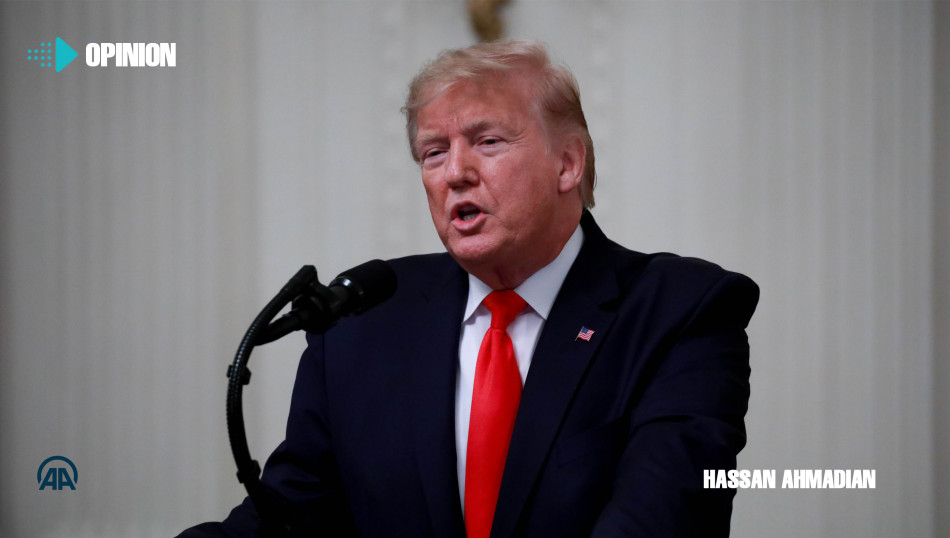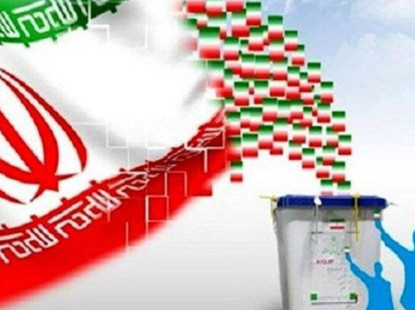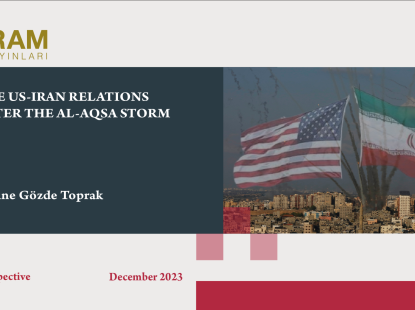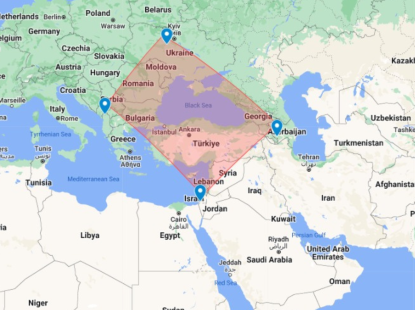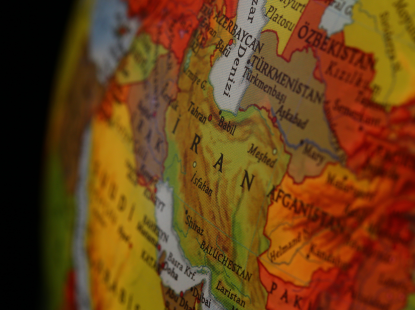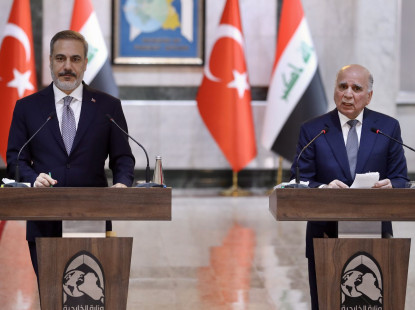Beyond Tension: Consequences of Trump’s Iran Policy
Coming vocal on the essence of the economic war imposed on Iran, in 2018, the US Secretary of State projected his confidence in the maximum pressure campaign against Iran by proclaiming, “If Iranians want their people to eat, they need to listen to the US.” Since May 2018, when Trump violated the JCPOA by withdrawing from it, his administration has actively pursued avenues to squeeze the Iranian economy to compel Tehran to acquiesce. Through imposing a maximum pressure campaign against Iran—the only party observing its JCPOA commitments according to 15 IAEA reports—the policy of starving Iranians for political gains, according to Mike Pompeo’s statement, became apparent, making the case for Iran’s Minister of Foreign Affairs to designate it “economic terrorism.” With a political culture enshrining “resistance” to threats, Iranians refused to capitulate. In January 2020, the maximum pressure campaign was crowned by a direct act of war, the assassination of General Soleimani while on an official visit to Iraq. Sanctioned seven months earlier, Trump’s justification for the assassination as a reaction to an “imminent threat” rang hollow.
Subsequently, tension escalated and risks of war seemed absolute. Notwithstanding the Iranian missile barrage on US bases in Iraq and that Trump’s backing down from his previous threats minimized the possibility of direct confrontation, tension remains high. Analyzing this within the context of the JCPOA, Iran couldn’t have vaticinated a worse scenario when endorsing the JCPOA back in 2015. Sanctions relief was promised in exchange for halting the bulk of their nuclear program and enduring the most rigorous inspection in history. The deal, however, resulted in US unilateral sanctions—with a significantly broader effect than the pre-JCPOA UN sanctions. Indeed, Trump’s Iran policy leaves Iran with two options: cave in and agree to his terms or resist and bank on internal and regional capabilities for now. Given the traditions of Iranian Bazaari culture, Iran knows they are better off without dealing with a deals-violator. Furthermore, pending on its political culture and JCPOA experience, and quite expectedly, Iran chose the latter.
The Trump administration is counting on its financial capabilities and international position to make life more distressing for the Iranians, hoping that this will bludgeon Tehran to surrender. The aim is to intimidate Tehran into accepting US demands in three main files: Iran’s nuclear program, its ballistic missiles program, as well as, its regional policy—all of which are included in Pompeo’s 12-point list of pre-conditions for a new deal with Iran. Moreover, the Trump administration’s reading of the pre-JCPOA dealings suggests that increased pressure will lead to that end. That’s why its tactic for Iran’s defiance over the past two years has been more sanctions—to the extent that there is not much left to sanction, which has led the US to widen its SDN (Specially Designated Nationals) list after designating every meaningful business and entity in Iran. Despite this, US measures are working against its desired aims for now, with Iran appearing more intransigent than ever in its US-related rhetoric and regional policy. Trump’s Iran policy’s main problem stems from the lack of a rational alternative, a plan B. There is only plan A: sanctions should work, and if they haven’t already, there must be more sanctions.
Struggling under pressure, Tehran sees the limits of Trump’s policy. Still, it has to weather the unprecedented pressure and eventually impel the US to revisit its Iran approach. Iran’s means to that end have been at play ever since the US withdraw from the JCPOA; specifically, since May 2019, when it started scaling down its JCPOA commitments. Iran’s stated goal is to resist the illegal US demands. However, its strategy is considerably more proactive than just resistance. Moving based on its tradition of gradual conduct in foreign policy, Tehran first gave ample time to the other JCPOA parties to uphold their commitments. Only after a long year, it started narrowing its commitments. Furthermore, had the EU/E3 proved more efficacious in observing their JCPOA commitments, Tehran would have thought twice before pruning its commitments—not to push the EU/E3 closer to the US. With the EU/E3 proving their insufficiency in standing up to the US’ unilateral approach and by halting business with Iran, Tehran’s new policy looked only rational for its strategic community.
The objective of this policy is to oblige the US/EU back to the nuclear file—as opposed to Trump’s demands of an Iranian surrender on all three files—Iran’s nuclear, ballistic missiles, and regional files. By moving beyond its commitments under the JCPOA, Iran has already placed considerable pressure on the US/EU and their JCPOA conduct. This is expected to continue in the short-to-medium terms. Moreover, Iran is unlikely to agree to a pre-JCPOA-period-type setting. Iran’s talks of US compensation for its violation of the JCPOA should be seen within the same policy—that Iran is ready for another round of negotiations but with redrafting stemming from the previous violations on the part of the US and the EU.
With Trump’s overt reluctance, the stand-off is likely to persist for years to come. As for Iran, though coping with the pressure is arduous, hastening to a new negotiation with the JCPOA violators is not expected any time soon. After all, minimizing Iran’s JCPOA commitments, which shortens its breakout time, should propel the US/EU to revisit their approach toward Iran. The question is whether they are ready for such a change. Trump’s assassination of General Soleimani was intended to reiterate his own priorities, conversely, it led Iran to liberate itself from much of its JCPOA commitments—deflecting the pressure to the US and the EU. Iran’s missile retaliation and expected less tolerance towards the US and its client states in the Middle East coincide within the same framework: resistance in the region and pushback in the JCPOA. The assassination has had another vital impact: boosting Iran’s approach with broad public support. Despite that the US/EU can pile more burden on Tehran, taking into account Iran’s reaction to the US “economic war,” this is not expected to change Iran’s position.
The Trump administration has visibly miscalculated the short-term repercussions of the JCPOA violation and Soleimani’s assassination. Considering past US-Iran experience and Iran’s political culture, the long-term consequences may be arguably more substantial. In the same vein as the August 1953 coup against Iran’s democratically elected government of Mohammad Mosaddeq, January 2020 will not fade from Iran’s collective memory. Back then, the US ousted an elected government and 25 years of iron-fist-rule by the Shah ensued—only to be faced with the 1979 Revolution, which was obviously out of its calculous. This time, however, by violating the JCPOA, imposing maximum pressure on Iran, and assassinating an Iranian national hero, the US did not engender a desired outcome. Rather, it precipitated public wrath, rallies around the flag, and an unparalleled direct retaliation against its military assets in Iraq. While there currently remains no room for diplomacy, the long-term consequences are yet to come. Nevertheless, what is evident is that this episode will play a pivotal role in Iran’s future dealings with the US.
Disclaimer: The viewpoints expressed by the authors do not necessarily reflect the opinions, viewpoints and editorial policies of IRAM.
